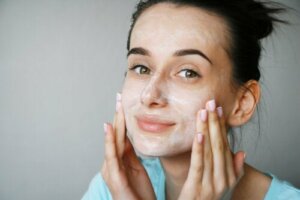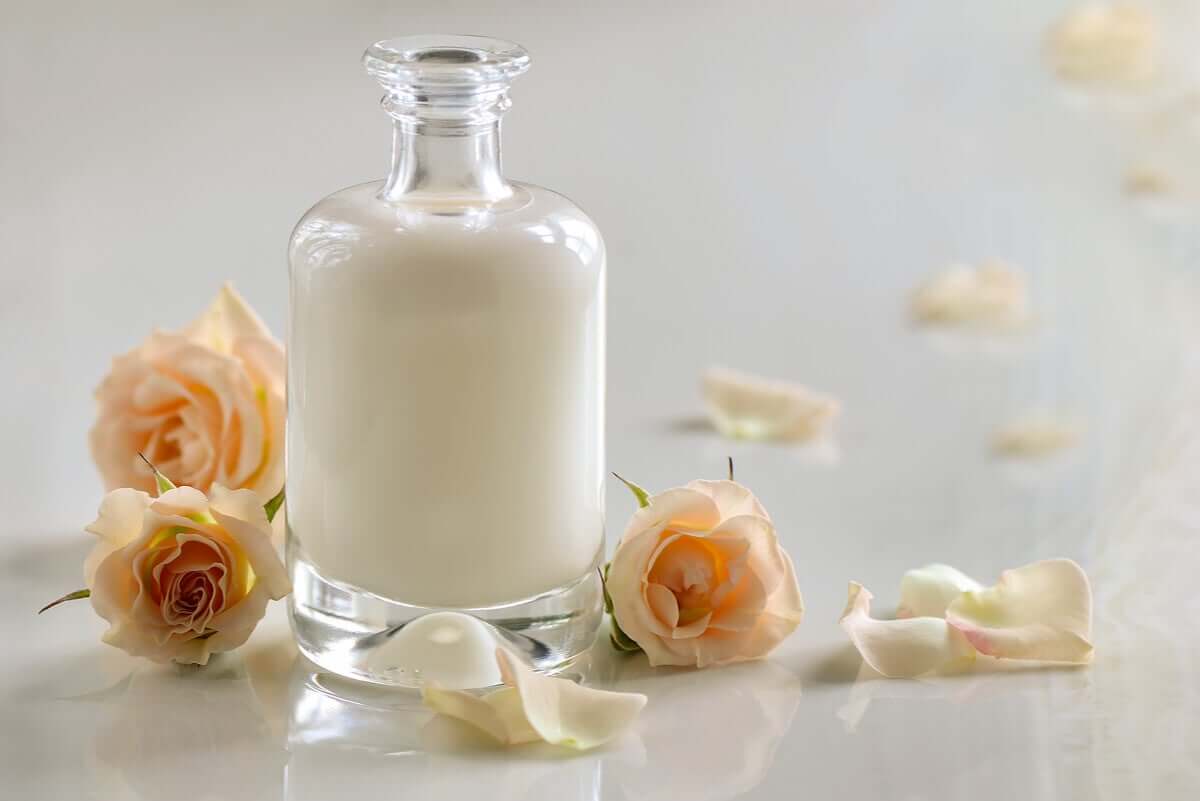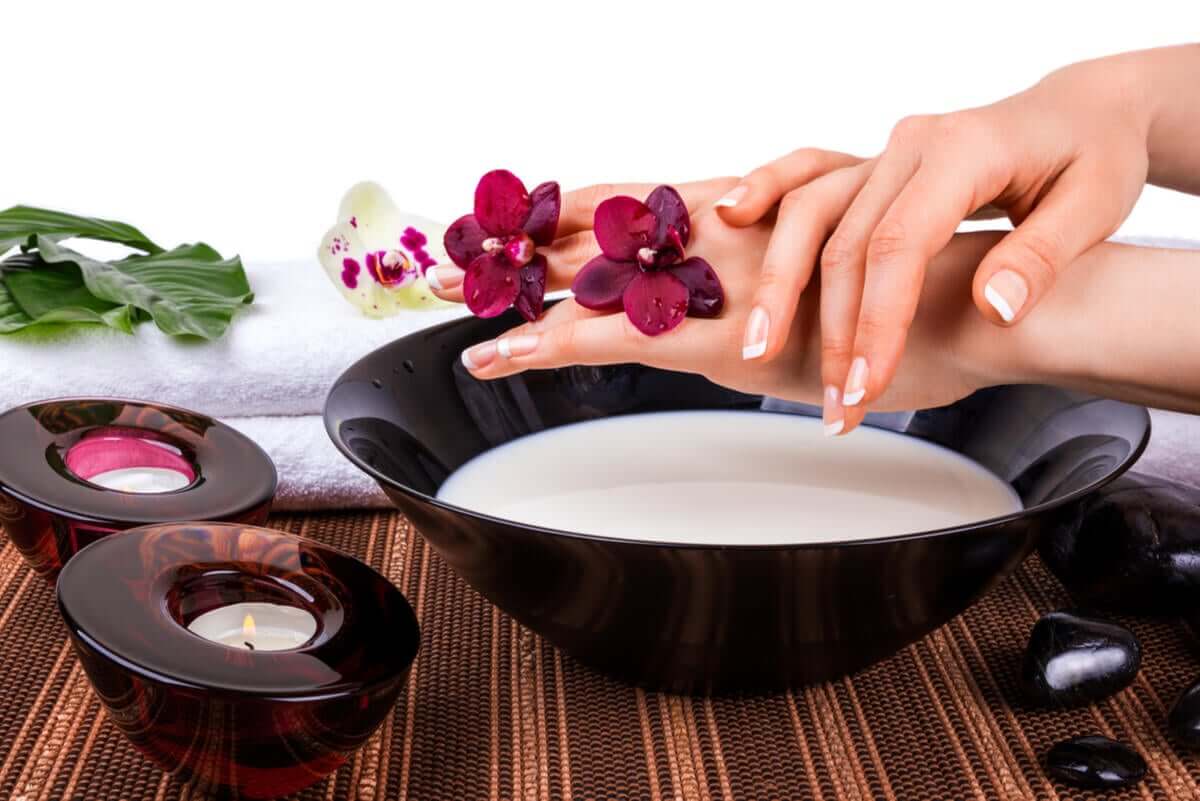Are Buttermilk Masks Good for the Skin?

Buttermilk masks include natural ingredients revered for their incredible health benefits for the skin. Because of its chemical makeup, many believe buttermilk is ideal for reducing spots, wrinkles, and other imperfections. Likewise, it can be used to clear your pores of impurities.
Is all of this too good to be true? How good can buttermilk masks really be for skincare? Below we’ll share what the experts say and lay out all the properties and benefits of buttermilk, so keep reading!
What is buttermilk?
Buttermilk is the liquid remaining after separating butter and milk. According to this article published in the Journal of Dairy Science, it is one of the most widely used dairy products in the food industry due to its emulsifying qualities and delicious flavor.
Additionally, buttermilk is easy on the stomach and contains powerful nutritional properties. Here are some of the specifics:
- Vitamins B, C, E y D
- Minerals such as phosphorous, sodium, calcium, potassium, magnesium, and manganese
- Fatty acids
- Proteins
Now, although it’s commonly used as a food supplement, it has also gained popularity as a natural ingredient to keep the skin healthy and radiant. In fact, some people even use buttermilk masks every day to correct skin issues and as part of their anti-aging regimen.

Read more: 5 Protein Shakes that You Should Include in Your Diet
Is it safe to apply buttermilk to my skin?
In natural cosmetics, people use buttermilk as a base in home remedies to get rid of spots, wrinkles, acne, and dermatitis. Some of its biggest supporters say that its mineral composition is great for keeping the skin healthy and free from imperfections. However, we should note that there is limited scientific evidence to support these claims.
Until now, no scientific studies confirm that the cosmetic use of buttermilk can actually solve skin conditions. Still, scientists consider its regular use to be safe for most people. A common use for buttermilk in skincare is to combine it with other ingredients like honey or oatmeal to make homemade masks.
Some benefits of buttermilk masks are:
- They have lightening properties, ideal for those hoping to erase dark spots and patches on their skin.
- They have soothing and calming agents, which can help reduce eczema and dermatitis flareups.
- The lactic acid in buttermilk is good for treating acne.
- Its active nutrients help protect skin from the sun and can mitigate sun damage.
- Buttermilk softens skin.
- An exfoliating mask easily removes dead skin cells.
What does the research show?
As we mentioned before, there are no clinical studies or evidence to prove buttermilk’s positive effects on the skin. With that being said, there are studies that support its nutritional content and antioxidant activities. Many studies show the importance of antioxidants in preventing premature aging.
One article published in The Journal of Dermatological Science explains that antioxidants are key in preventing photo-induced aging of the skin. In other words, they help protect the skin cells from the harmful effects of radiation and free radicals that appear from unhealthy exposure to the sun.
On the other hand, lactic acid (one of the key components of buttermilk) also seems to help the skin. A study published in the International Journal of Dermatology determined that lactic acid not only helps protect the skin but also has beneficial hydrating properties, which, in turn, helps prevent aging.
Other elements like proteins, vitamins, and minerals are also effective additions to the aforementioned effects of buttermilk. And, despite the lack of research, it seems that whey does indeed have a positive impact when applied to the skin. Are you going to try it?
How can I use buttermilk for my skin?
One of the biggest advantages of using buttermilk in your skincare routine is that it’s versatile and you can add it to tons of homemade products. Of course, you can always apply it by itself with the help of a cotton pad. If you decide to use it this way, we recommend storing your buttermilk in the fridge and apply it cold.
Many people love to combine buttermilk with rose water, which people consider to be a natural tonic, perfect for rejuvenating skin and minimizing oil production. You can also mix it with oatmeal or any other grain to create a homemade exfoliating protein mask. Here’s a simple recipe for a buttermilk mask.
Ingredients
- 1/4 cup buttermilk (59 milliliters)
- 1 tablespoon oatmeal (15 grams)
- 1 tablespoon honey (15 grams)
Method
- Mix all the ingredients in a bowl until it forms a paste. If the mixture looks too wet, you can add more oatmeal.
Use
- Once your mask is ready, clean your face with a damp washcloth and apply the mask to your face using clean hands.
- Let it work for about 15 to 20 minutes, then wash it off with warm water using circular motions.
- For best results, use the mask 2 or 3 times a week.

Always talk with a dermatologist
Even though buttermilk is loaded with potential benefits for your skin, it’s always best to talk with your dermatologist before using these types of ingredients. Although it’s considered safe to use, if you have serious skin problems, this should not be your first-choice product.
Professional dermatologists can help you find other uses for incorporating buttermilk into your skincare routine, among other things. In fact, they can even suggest products that include buttermilk in their ingredients.
All cited sources were thoroughly reviewed by our team to ensure their quality, reliability, currency, and validity. The bibliography of this article was considered reliable and of academic or scientific accuracy.
- Sodini I, Morin P, Olabi A, Jiménez-Flores R. Compositional and functional properties of buttermilk: a comparison between sweet, sour, and whey buttermilk. J Dairy Sci. 2006 Feb;89(2):525-36. doi: 10.3168/jds.S0022-0302(06)72115-4. PMID: 16428621.
- Tang SC, Yang JH. Dual Effects of Alpha-Hydroxy Acids on the Skin. Molecules. 2018;23(4):863. Published 2018 Apr 10. doi:10.3390/molecules23040863
- Conway V, Gauthier SF, Pouliot Y. Antioxidant activities of buttermilk proteins, whey proteins, and their enzymatic hydrolysates. J Agric Food Chem. 2013 Jan 16;61(2):364-72. doi: 10.1021/jf304309g. Epub 2012 Dec 31. PMID: 23244578.
-
Wong PY, Kitts DD. A comparison of the buttermilk solids functional properties to nonfat dried milk, soy protein isolate, dried egg white, and egg yolk powders. J Dairy Sci. 2003 Mar;86(3):746-54. doi: 10.3168/jds.S0022-0302(03)73655-8. PMID: 12703609.
- Masaki H. Role of antioxidants in the skin: anti-aging effects. J Dermatol Sci. 2010 May;58(2):85-90. doi: 10.1016/j.jdermsci.2010.03.003. Epub 2010 Mar 17. PMID: 20399614.
-
Algiert-Zielińska B, Mucha P, Rotsztejn H. Lactic and lactobionic acids as typically moisturizing compounds. Int J Dermatol. 2019 Mar;58(3):374-379. doi: 10.1111/ijd.14202. Epub 2018 Sep 30. PMID: 30270529.
- Smith WP. Epidermal and dermal effects of topical lactic acid. J Am Acad Dermatol. 1996 Sep;35(3 Pt 1):388-91. doi: 10.1016/s0190-9622(96)90602-7. PMID: 8784274.
This text is provided for informational purposes only and does not replace consultation with a professional. If in doubt, consult your specialist.








